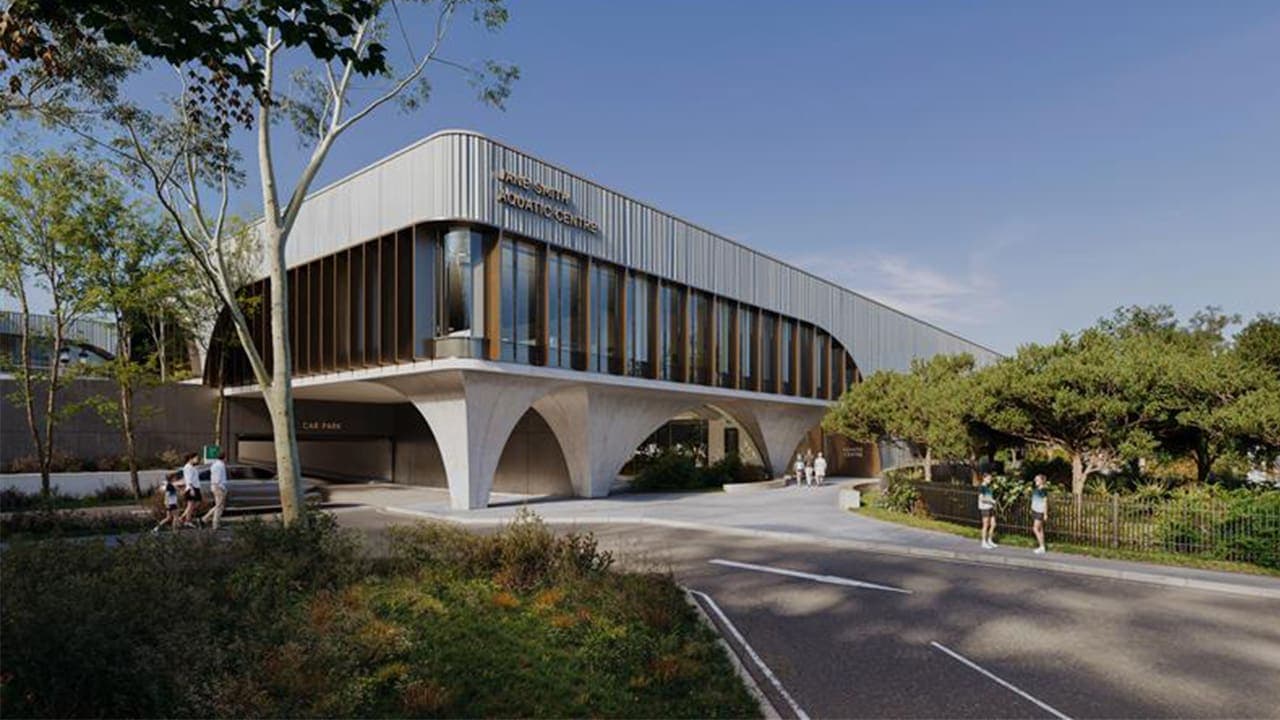
Kapitol: ESG at the Core of Every Project
Kapitol embeds ESG in every project, from carbon reduction and ethical procurement to transparent governance, creating lasting value for clients and communities.

In partnership, Kapitol, Neoscape, and Architectus are excited to launch a three-part series taking you on the journey of using Virtual Design and Construction (VDC) to reduce risk in the delivery of the Methodist Ladies’ College Physical Education and Sports Precinct.
Part 1 – The VDC Journey Begins – Identifying Challenges and Opportunities
Neoscape and Kapitol are working together on a new Physical Education and Sports Precinct development for Methodist Ladies’ College, Kew. This capital works project, designed by Architectus, features a 50-metre competition pool with advanced filtration and water systems, dedicated learn-to-swim pool, indoor and outdoor basketball and netball courts, gymnastics hall, cardio and strength and conditioning rooms, wellness and relaxation spaces, integrated classrooms, and community zones. Kapitol has been engaged under a design and construction contract for the delivery of the project.
Since 2018, Kapitol has been progressively building its inhouse design management and digital engineering capabilities, driven by a goal to reduce the amount of rework and waste on site and help improve quality outcomes for clients. For the past four years, the team has been 3D modelling every project—regardless of size and whether mandated by the client—to identify and address design risks before hitting the ground.
Together, we identified an opportunity to track and document the use of VDC across the lifecycle of the MLC project and the requisite challenges and benefits that it brings to the project.
What is VDC?
It’s not uncommon for the term “VDC” to be used without a true understanding of what it actually is. VDC does not equate to BIM or modelling in 3D. Although those are both aspects of VDC, the entire process involves much more. VDC is a methodology that integrates advanced 3D modelling (Building Information Modelling, or BIM), data management, and collaborative platforms. By virtually constructing a facility before physical building commences, project teams can foresee design clashes, improve scheduling, and optimise construction strategies in a collaborative environment.
Why Model Before Building?
VDC provides a “digital rehearsal” of a project. From simulating water flow in an aquatic centre to ensuring correct placement of mechanical, electrical, and plumbing (MEP) systems, the model becomes a living, evolving reference point for the project design.
Modelling before building is essential in aquatic projects to help identify typical water-related risks, including:
What Do We Model?
Kapitol’s inhouse Digital Engineering team works with Consultants and Trade Partners to model every aspect of the project. For example, the digital model for the MLC PE and Sports Precinct project includes:
By integrating all these elements into one federated model, the various consultant teams can identify and resolve potential risks in the design stage.
What Are the First Steps to a Successful VDC Journey?
The key to success starts with clear VDC scope delineation and early and consistent collaboration with the design team.
During the onboarding process, Kapitol and Neoscape worked collaboratively with lead consultant Architectus, led by Principal John Sprunt, and other consultants to ensure familiarity with, and understanding of, the various VDC software platforms and processes, including BIM360, Autodesk Construction Cloud, and Revizto. Architectus has a large inhouse digital engineering team and adopts a “digital-led design” philosophy which aligns with Kapitol’s approach.
However, not all consultants are at the same level of understanding and utilisation of VDC technology. The onboarding process can present challenges, particularly in adoption by stakeholders who may not have a high level of experience with VDC. Some of the key objectives of the onboarding process, as well as the challenges that we collectively overcame, are described below and captured in a Project Digital Engineering Execution Plan:
What VDC Has Achieved So Far?
The use of VDC is already reaping rewards, including:
“A key benefit has been the platform it creates for collaboration and proactive engagement amongst the consultant team. Regular meetings with the project consultant team enhances communication and teamwork. The use of a shared model gives each consultant a clear visual into how their work relates to other disciplines.”
– Julian Russell, Senior Project Manager, Neoscape
“The clash detection process provides us with a level of confidence that issues are resolved ahead of being identified during the construction phase, at which point they are often more difficult to resolve and lead to delays to the project program and completion date.”
– Julian Russell, Senior Project Manager, Neoscape
What’s Next?
As the project progresses, we’ll continue to track and share insights on the VDC process in action. In Part 2, we’ll explore how we’re refining the federated 3D BIM model, the challenges associated with running effective clash coordination sessions and managing change through VDC.
Stay tuned as we dive deeper into how VDC is reshaping construction delivery, one project at a time.
For any questions or comments, please reach out to: Lisa James, Kapitol